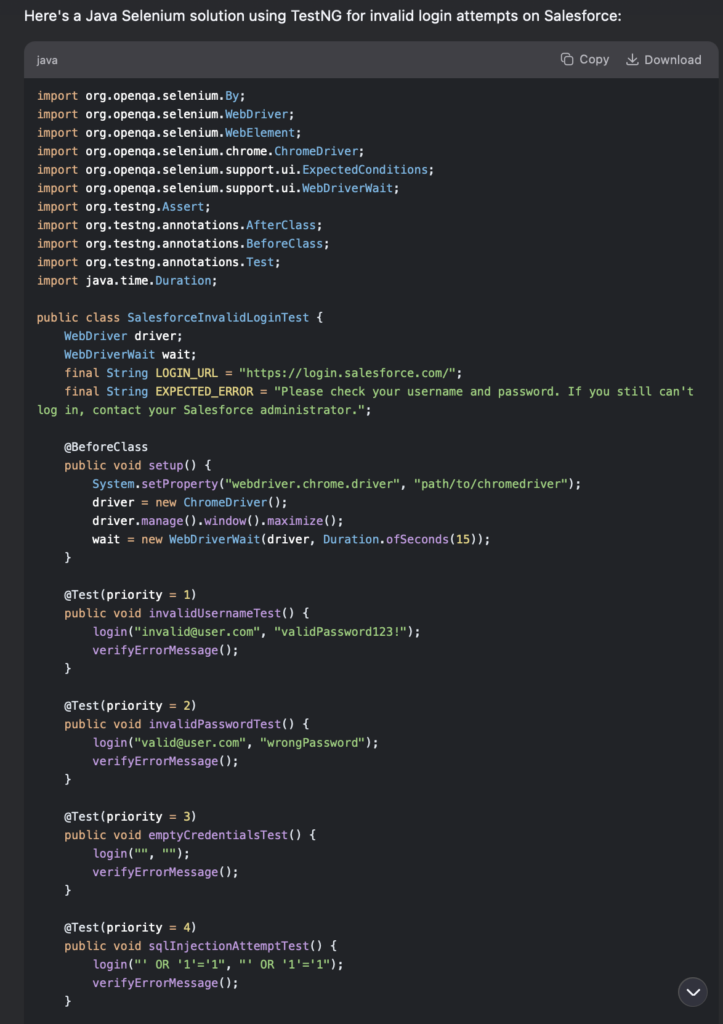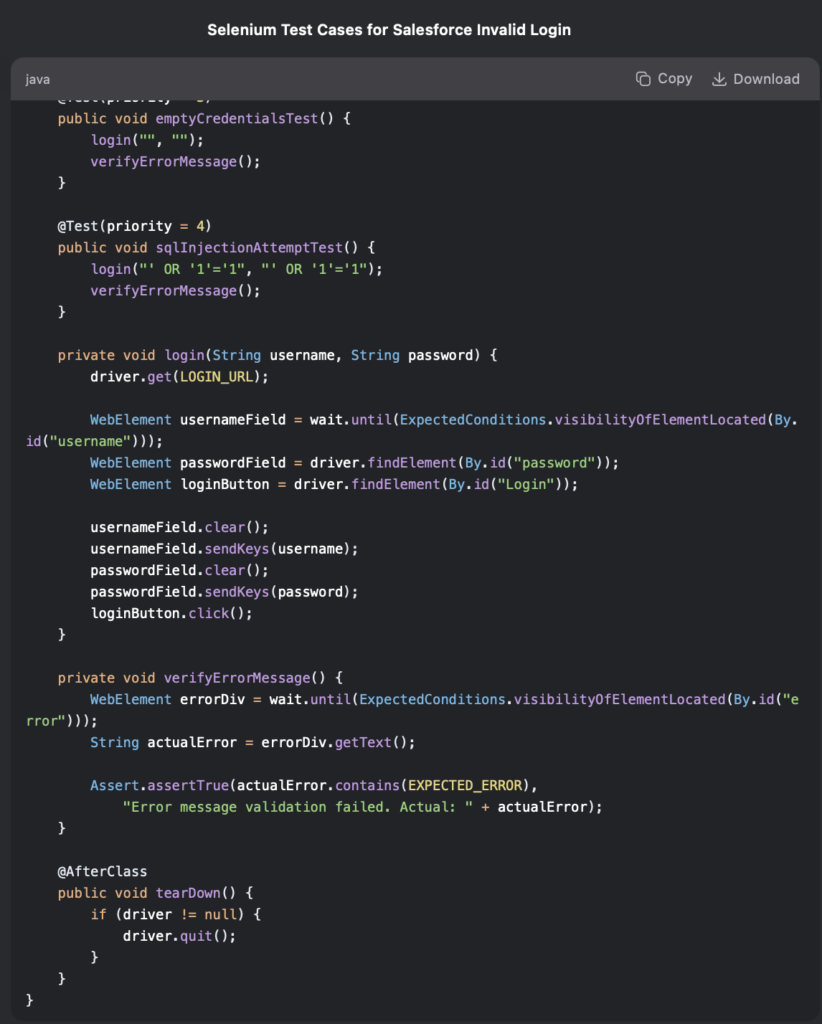Vibe Coding with AI

In today’s AI-powered development landscape, a fresh concept is reshaping recently how we write code – vibe coding. Unlike traditional development that demands strict syntax and technical fluency, vibe coding allows developers, testers, and product teams to collaborate with AI using natural language. You describe your intent by writing simple prompts, for example, “Generate test cases for invalid login attempts for a Salesforce application” or “design a mobile-first landing page with dark mode” and AI tools like ChatGPT or GitHub Copilot translate that into code in the preferred programming language. This shift transforms development from line by line construction to intent-driven creation, enabling faster and more accessible workflows across roles.
Here’s a Java Selenium solution using TestNG for invalid login attempts on Salesforce through Deepseek model:


The appeal lies in its versatility. QA can draft comprehensive test scripts by describing edge cases. Product managers can prototype features without writing a single loop. Developers accelerate boilerplate tasks generating mock APIs or scaffolding UI elements, so they can focus on logic and architecture. However, vibe coding isn’t magic. It still demands human review. AI might miss context, introduce inefficiencies, or create insecure code. That’s why understanding the limits of AI-generated output and applying rigorous validation is key to making this method both effective and responsible.
As vibe coding evolves, it’s becoming a collaborative model rather than a replacement strategy. Whether you’re describing test scenarios, suggesting UI improvements, or drafting backend workflows, your intuition and creativity become the real driver. Embracing this approach means iterating prompts, refining outputs, and staying grounded in fundamentals. The future of development is no longer bound by code alone, it’s about user’s intention, clarity, and the confidence to build through conversation.
Image credit: tsamoudakis

